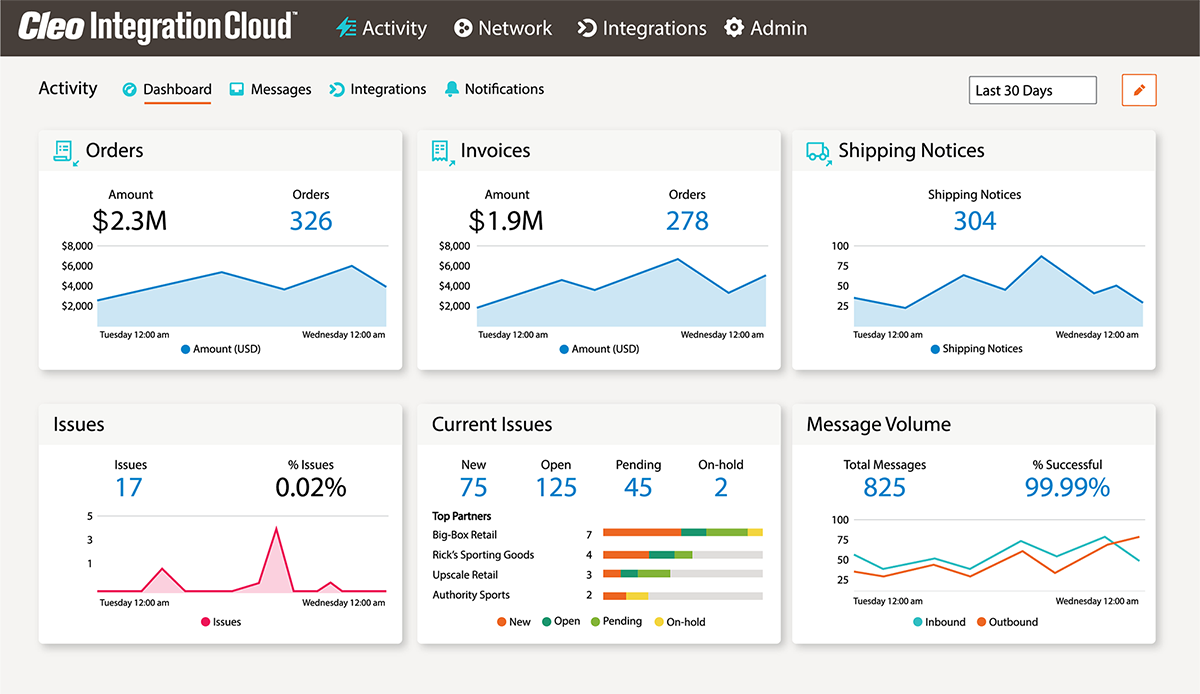The Key Challenges in the Wholesale Distribution Industry

The wholesale distribution industry in the U.S. is very large with annual revenues of $6 trillion growing at 4 percent, consisting of over 300,000 companies, employing 6 million people, and accounting for 28 percent of US GDP.
The industry is under major disruption due to factors ranging from China tariffs, rising shipping costs, the growth of e-commerce, and the increasing desire of manufacturers and retailers to completely bypass the wholesale distribution channel and instead do business directly with each other under a “Direct to Consumer” (D2C) business model.
Faced with these myriad disruptive forces, the industry is aggressively embracing technology – for data-driven decision-making, more agile supply chain management, better overall visibility, and differentiating customer experiences – in order to thrive.
From the data and application integration perspective too, which is a critical enabling technology in all this, there is also an expanding role of APIs for streamlining the wholesale distribution ecosystem to rapidly create significant economic value as the entire industry undergoes rapid digital transformation.
Based on these tech trends, plus the ongoing disruptions from China tariffs and COVID-19, the wholesale distribution industry is facing several difficult challenges.
Navigating Challenges
First, suppliers are finding ways to avoid splitting margins with the distributor and building direct relationships with their customers.
Second, there is an inability to meet the ever-increasing customer expectations for delivering end-to-end supply chain visibility, omnichannel fulfillment, 24/7 customer service, order tracking, and real-time inventory management.
In addition, technology-driven new entrants such as Amazon Business and eBay are disrupting the status quo in wholesale distribution, noticeably accelerating the competitive intensity.
The biggest disruptors are really the “digital leaders” who are ahead in their technology maturity and big-box retailers looking to expand their share of the customer wallet. According to a 2019 survey by McKinsey & Co., customers expect the share of purchases made through digital players to rise by 50 percent (from a low base) over the next five years.
Growth Drivers for Wholesale Distribution
Given the prevailing competitive and technology circumstances, here are three ways wholesale distribution companies can strategically drive growth:
1. Build scale through strategic mergers and acquisitions
Wesco’s recent acquisition of Anixter has created a $17 billion revenue company that has provided tremendous scale and cost synergies to compete smarter and more effectively.
2. Deliver value-added services beyond product distribution
Most wholesale distributors are providing value-added services such as credit financing, inventory management, and product expertise. Building differentiated value-added services is the only way to fend off competition from traditional players as well as online distributors.
3. Become digital
Wholesalers are still lagging behind most of logistics companies in terms of digital adoption. B2B purchasers are expecting omnichannel experiences (website, mobile, in-store), easy access to product information, online ordering, order tracking, and inventory management. Distributors investing in digital strategies are accelerating sales growth, expanding customer reach, and improving customer retention.
Cleo’s ecosystem integration platform is used by hundreds of customers in the wholesale distribution industry, and these are the things we’re seeing. What are your observations on digital transformation in the wholesale distribution market?

About Cleo
